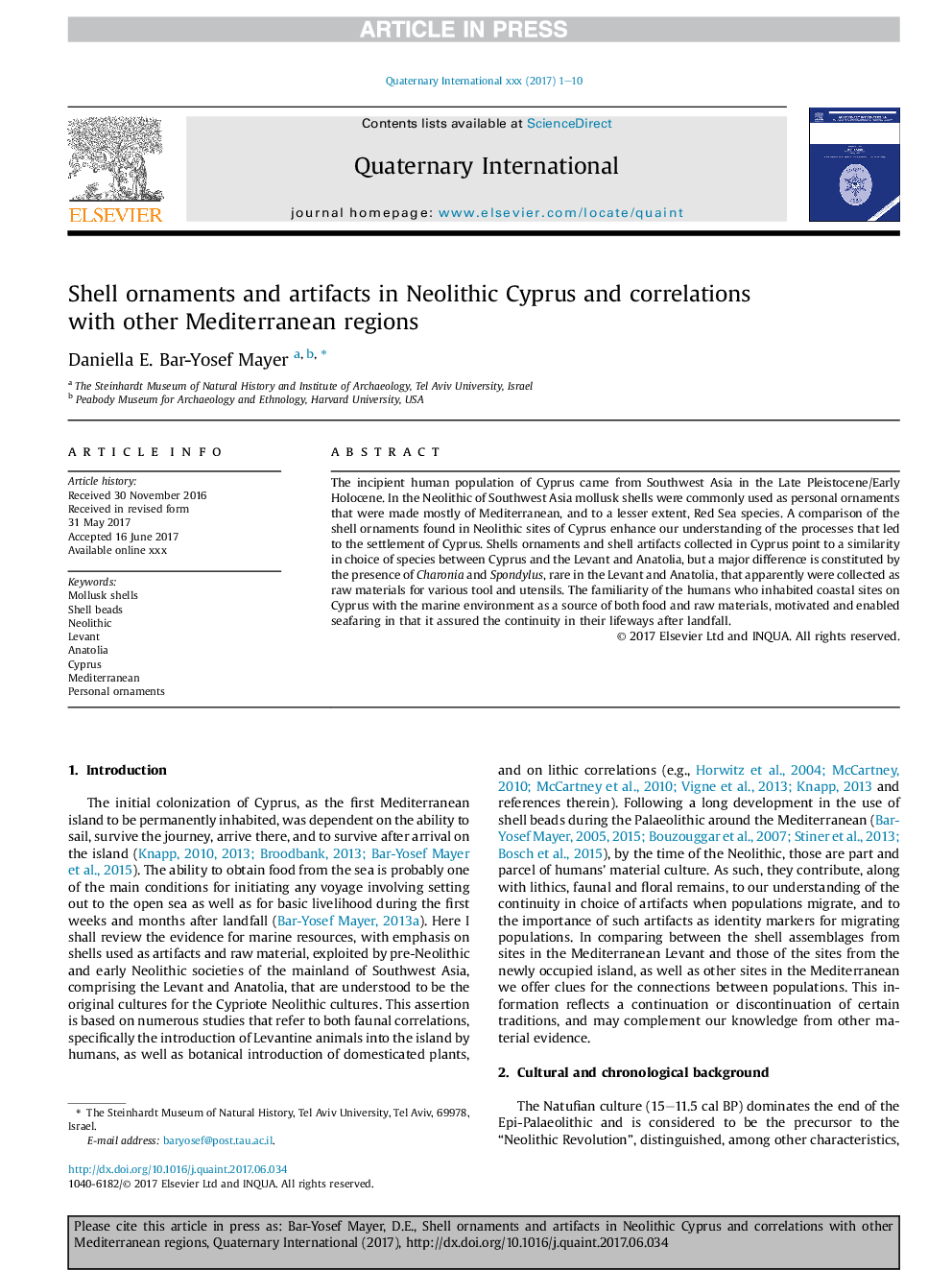| Article ID | Journal | Published Year | Pages | File Type |
|---|---|---|---|---|
| 7450959 | Quaternary International | 2018 | 10 Pages |
Abstract
The incipient human population of Cyprus came from Southwest Asia in the Late Pleistocene/Early Holocene. In the Neolithic of Southwest Asia mollusk shells were commonly used as personal ornaments that were made mostly of Mediterranean, and to a lesser extent, Red Sea species. A comparison of the shell ornaments found in Neolithic sites of Cyprus enhance our understanding of the processes that led to the settlement of Cyprus. Shells ornaments and shell artifacts collected in Cyprus point to a similarity in choice of species between Cyprus and the Levant and Anatolia, but a major difference is constituted by the presence of Charonia and Spondylus, rare in the Levant and Anatolia, that apparently were collected as raw materials for various tool and utensils. The familiarity of the humans who inhabited coastal sites on Cyprus with the marine environment as a source of both food and raw materials, motivated and enabled seafaring in that it assured the continuity in their lifeways after landfall.
Related Topics
Physical Sciences and Engineering
Earth and Planetary Sciences
Geology
Authors
Daniella E. Bar-Yosef Mayer,
